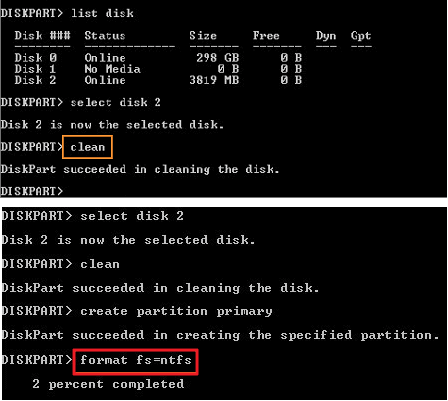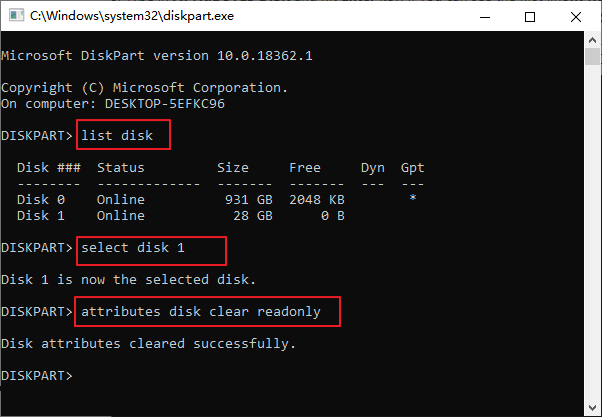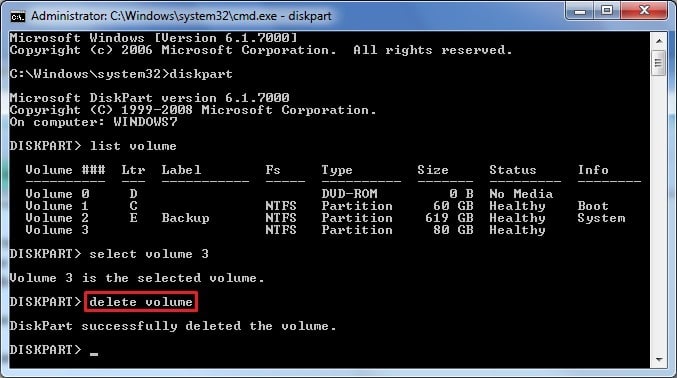

- #DISK PART CLEAN DISK COMMAND HOW TO#
- #DISK PART CLEAN DISK COMMAND WINDOWS 8#
- #DISK PART CLEAN DISK COMMAND WINDOWS 7#

create partition primary size=SIZE_IN_MB – use this command to create a new primary partition.assign – use assign to assign a letter or a mount point to the current active partition.active – use the active command to set the focus on the current partition to be active.list volume – use list volume to get information about each volume available on the computer.list partition – use this command to get information about each partition available on a specific disk.list disk – use list disk to get summary information about the available disks on your computer.detail volume will deliver information about the current volume.detail partition will deliver information about the current partition.detail disk will deliver information about the current disk.select volume – use this command to set the focus on a specific volume.select partition – use the select partition command to set the focus on a specific partition.The drive is now erased clean, and can be re-initialized, partitioned, and formatted on your computer. The drive's partition, data, and signature is now removed. From the diskpart prompt, type clean and press Enter.Please be certain that you are erasing the correct disk.Ī message appears saying that the disk is selected. Please be certain that you are erasing the correct disk.ĭiskpart Erase/Clean will permanently erase/destroy all data on the selected drive. Warning: Diskpart Erase/Clean will permanently erase/destroy all data on the selected drive. From the diskpart prompt you will need to select a disk disk number (for instance, if the 3TB+ drive is Disk 1, you would type select disk 1) and press Enter.Please be certain that you are erasing the correct disk. Step one verified that Disk 1 is the 3TB drive. From the diskpart prompt, type list disk and press Enter.Ī list of disks will appear in a text format.From the command prompt, type diskpart and press Enter.Select Command Prompt (Admin) from the pop-up menu.
#DISK PART CLEAN DISK COMMAND WINDOWS 8#
On Windows 8 move your mouse to the bottom left hand corner of the desktop screen and right click. It will prompt you with the message, "Do you want to allow the following program to make changes to this computer," click yes. Then right click on cmd.exe and run as administrator.
#DISK PART CLEAN DISK COMMAND WINDOWS 7#
To open the Command Prompt on a Windows Vista or Windows 7 machine click on Start and type cmd in the search bar. Important: note the Disk number (such as Disk 1). The properties window shows that the partition table on the drive is MBR.

Cleaning or erasing a storage device removes all data and partitions from the drive. In this article "Clean" and erase are used interchangeably. The command that erases the drive during this process is "Clean". This article explains the Microsoft Diskpart Erase utility.

#DISK PART CLEAN DISK COMMAND HOW TO#
This article explains how to Diskpart Erase and Clean on a Drive Through the Command Prompt*ENDīack up any important data on this drive before proceeding.


 0 kommentar(er)
0 kommentar(er)
